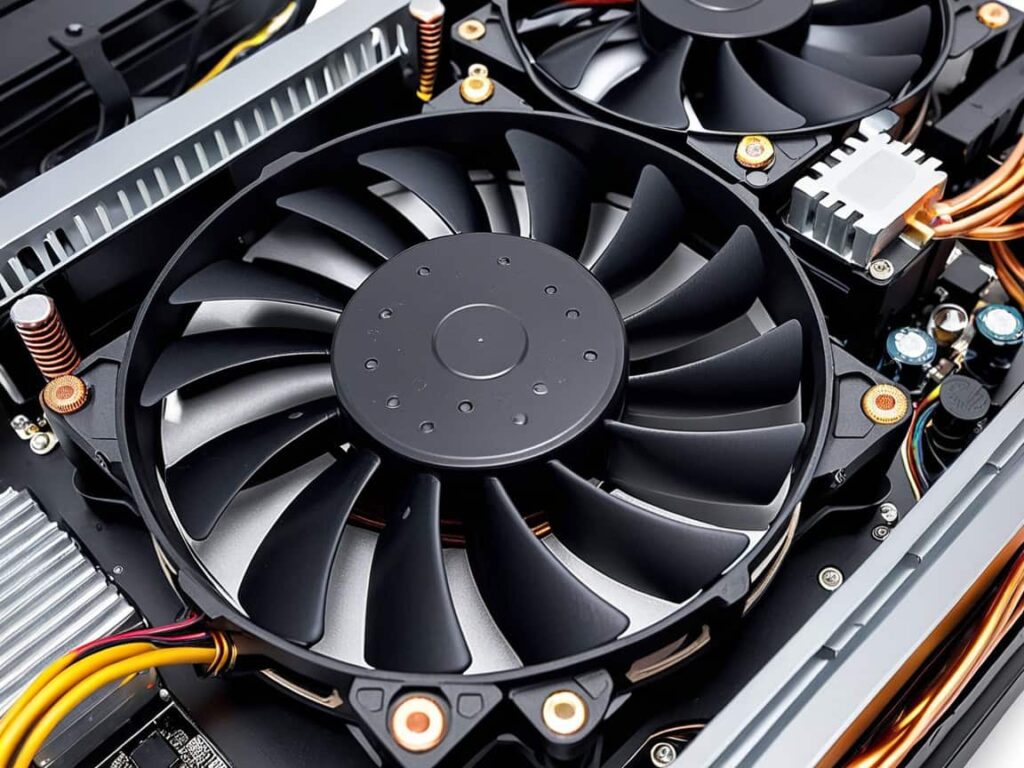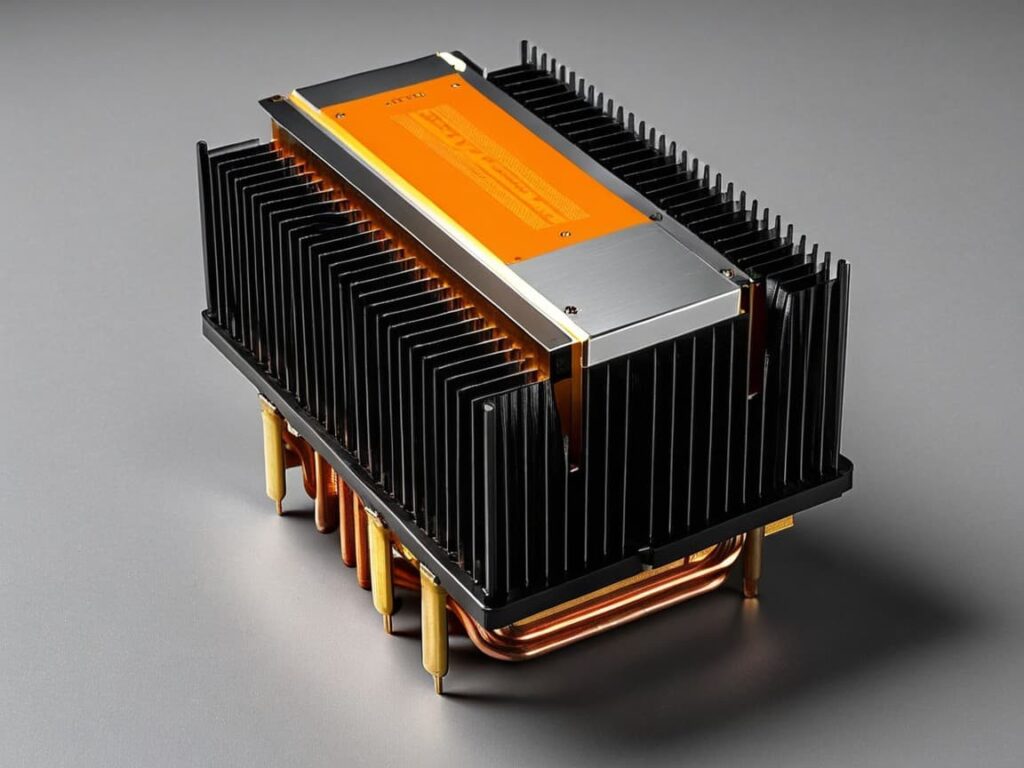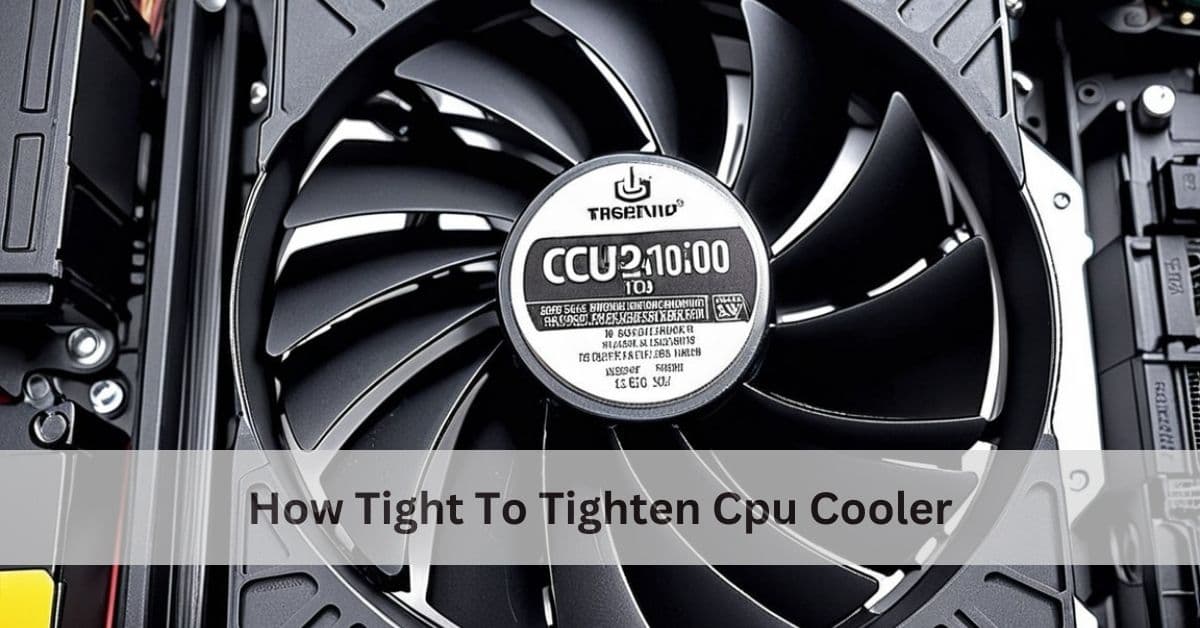I once tightened my CPU cooler too much and ended up cracking the motherboard—an expensive mistake! After that, I learned it’s best to tighten it snugly but not forcefully. A balanced approach ensures proper contact without risking damage to your components.
Tightening a CPU cooler is all about balance—too loose, and it won’t cool properly; too tight, and you risk damaging the hardware. Aim for a snug fit where the cooler is secure but without over-tightening. This ensures optimal performance and avoids costly mistakes.
This article will discuss”how tight to tighten cpu cooler”
Why is the tightness of a CPU cooler important?

The tightness of a CPU cooler is important to ensure good contact between the cooler and the CPU. Proper contact improves heat transfer, keeps the CPU cool, and prevents damage from being too loose or too tight.
Read More: Bad Cpu Type In Executable Mac – Here’s How To Fix It!
How do I know if my CPU cooler is too tight?
Excessive Resistance:
Excessive resistance happens when you tighten a CPU cooler too much, making it hard to turn screws. This can damage your motherboard or cooler. Always tighten screws gently and stop when they feel securely snug.
Motherboard Flexing:
Motherboard flexing happens when too much pressure is applied during installation, like tightening a CPU cooler too hard. It can damage the board or connections. Always tighten screws evenly and avoid using excessive force to prevent this issue.
Stripped Screws:
Stripped screws happen when the screw head is worn out, making it hard to tighten or loosen. To fix this, use tools like rubber bands, pliers, or special screw extractors for easy removal without damaging your hardware.
Cracking Sound:
A cracking sound from your CPU cooler can indicate loose parts or improper installation. It may also result from thermal expansion as the cooler heats up. Check if the cooler is securely attached to avoid damage and ensure better performance.
How hard should you tighten a CPU cooler?
- Tighten the CPU cooler screws firmly but not excessively—apply even pressure.
- Follow the manufacturer’s instructions for torque or tightening specifications.
- Tighten the screws in a crisscross pattern to ensure even contact.
- Avoid over-tightening, as it can damage the motherboard or cooler.
- A snug fit is enough—ensure the cooler is secure without using excessive force.
How much torque for CPU cooler screws?
Recommended Torque Range:
The recommended torque range for tightening a CPU cooler is usually between 15-30 Nm (Newton-meters). It’s important not to over-tighten, as this can damage the cooler or motherboard. Always follow the manufacturer’s specific instructions for the best results.
Air Coolers:
Air coolers use fans to blow air through heat sinks to cool the CPU. They are simple to install, cost-effective, and offer good performance for most users. Proper installation ensures the cooler works well and prevents overheating.
AIO Coolers:
AIO coolers are liquid cooling systems for your CPU. They include a pump, radiator, and fans, all in one unit. AIO coolers are easy to install, provide better cooling than air coolers, and help keep your system running efficiently.
Manufacturer Guidelines:
Manufacturer guidelines for tightening a CPU cooler provide the best instructions for secure installation. Always follow the recommended torque and pressure to avoid damaging the cooler or motherboard. Proper tightening ensures good cooling performance and system stability.
How tight should a heatsink be?

A heatsink should be tight enough to stay in place but not overly tight. Tighten the screws until they stop turning, but don’t force them. Too much pressure can damage the motherboard or cooler, while too little can affect cooling performance. Aim for a snug fit to ensure good heat transfer without causing damage.
Read More: Will My Cpu Bottleneck My Gpu – Find Out In Seconds!
Is my CPU cooler supposed to be loose?
No, your CPU cooler should not be loose. It needs to be securely attached to the CPU to ensure proper cooling. If it’s too loose, it won’t make good contact with the CPU, which can cause overheating. Tighten the cooler gently, but avoid over-tightening to prevent damage. Always follow the manufacturer’s guidelines for best results.
How tight should be a heatsink mounted to CPU?
The heatsink should be tight enough to stay in place but not too tight. Tighten the screws until they stop, then give them a slight turn. Over-tightening can damage the CPU or motherboard. Make sure the heatsink is secure, but avoid using excessive force to prevent causing harm to the components.
How to Avoid CPU Cooler Screw Risks?
Tighten Screws Gently:
When tightening CPU cooler screws, do it gently. Tighten them enough to hold the cooler in place, but avoid using too much force. Over-tightening can damage the cooler, motherboard, or CPU, so a careful approach is best.
Use a Torque Wrench:
Using a torque wrench helps you tighten your CPU cooler with the correct force, preventing over-tightening or under-tightening. This ensures proper installation and prevents damage to your hardware. Always follow the recommended torque settings for your cooler model.
Follow Manufacturer Instructions:
Always follow the manufacturer’s instructions when tightening your CPU cooler. This ensures proper installation and prevents damage to your CPU or motherboard. Each cooler may have specific guidelines, so checking the manual helps achieve the best performance and safety.
Check Tightness Regularly:
It’s important to check the tightness of your CPU cooler regularly. Loose screws can cause poor cooling and higher temperatures. Tighten the cooler just enough to keep it secure, but not too tight to avoid damaging the components.
How Tight Should a CPU Cooler Be?
A CPU cooler should be tight enough to stay secure but not overly tight. If it’s too loose, your CPU may overheat. If it’s too tight, it could damage the motherboard or the cooler itself. Aim for a snug fit where the cooler is firmly attached, but without forcing the screws.
CPU not seated properly symptoms

If the CPU is not seated properly, your computer might not start, or it could freeze or shut down unexpectedly. You may also notice slow performance, random errors, or system crashes. In some cases, the computer might show an error message or a blank screen. Ensure the CPU is securely installed to avoid these issues.
Read More: Games That Are Cpu Intensive – Find Out If Your Pc Can
CPU cooler too much pressure
Applying too much pressure when tightening a CPU cooler can cause damage to your motherboard or CPU. It can crack the board, break the socket, or even affect cooling performance. It’s important to tighten the cooler just enough to keep it secure but not overly tight. Always follow the manufacturer’s guidelines for the best results.
FAQs:
1. What happens if I apply too much pressure to a CPU cooler?
Applying too much pressure can damage your motherboard or CPU, causing cracks or poor contact, which leads to overheating.
2. How tight should my CPU cooler be?
The CPU cooler should be tightened securely but not over-tightened. A snug fit without excessive force ensures optimal cooling without damage.
3. Can over-tightening a CPU cooler cause overheating?
Yes, over-tightening can create uneven pressure, reducing the cooler’s efficiency and causing higher temperatures.
4. How can I tell if my CPU cooler is too tight?
If the screws feel difficult to turn or the motherboard shows signs of flexing, the cooler may be too tight.
5. Is there a risk of damaging my CPU cooler during installation?
Yes, if the cooler is tightened too much, it can cause pressure damage to the CPU or motherboard. Always follow the recommended torque values.
6. Should I use a torque wrench to install the CPU cooler?
Using a torque wrench can help ensure the cooler is tightened to the right level, preventing over-tightening and potential damage.
Conclusion:
Tightening a CPU cooler requires careful attention to avoid damage to the motherboard or CPU. Too much pressure can cause cracks or reduce cooling efficiency, while insufficient tightening can lead to overheating. Always follow the manufacturer’s guidelines for the correct tightness and ensure even pressure across the cooler. Using a torque wrench can help achieve the right level of tightness. Proper installation ensures optimal performance and protects your hardware in the long run.
